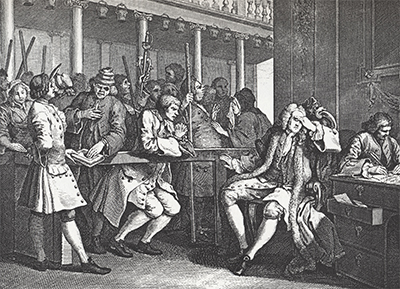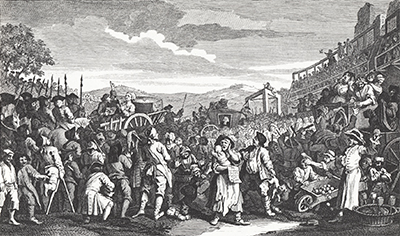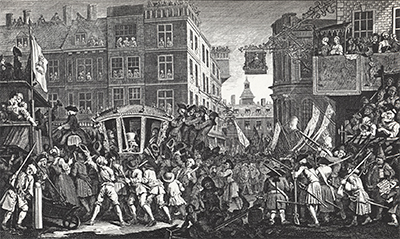Industry and Idleness is a series of engravings created in 1747 by William Hogarth. Like much of his artwork they are intended to serve as a way of demonstrating to children the rewards of diligent hard work. There are 12 engravings in the set which are now located in the British Museum.
Hogarth was born in London in 1697 to a lower middle class family and was apprenticed as a youth which is where he first learnt the art of engraving. His father had inconsistent fortunes in life and was even imprisoned for outstanding debts on one occasion, and this is considered to have shaped the artist’s themes to a certain extent.
Hogarth was strongly influenced by Italian and French art and engraving and much of his output was satirical and often bawdy caricatures which became very popular and widespread during his lifetime. Hogarth started to produce his engraved designs around 1710 and also moved on to oil painting and produced what are known as ‘conversation pieces’ which were small portrait groups of between 12 to 15 inches in size. His initial commissioned engraved pieces included shop bills, design plates for booksellers and coats of arms.
The engravings featured in Industry and Idleness portray a tale of two apprentices at various stages in their lives and alternate between themes of industriousness and idleness and the consequences of each.
One path leads to power and status whilst the other route is a downward spiral towards disgrace and crime and ultimately and execution, and there are biblical texts to illustrate the folly or wisdom of their respective actions. The engravings of William Hogarth are finely detailed showing his remarkable skill at engraving and the obvious training he had from an early age.
The designs are incised into metal using a tool known as a graver and it is then possible to cover the image with ink and print it. Hogarth was at the forefront of new methods of printing and engraving as is evident from the mass production of many of his works including his detailed depictions of social success or moral decline.
Due to his talent in engraving and painting and partly as a result of the era he lived in, Hogarth’s prints and artwork spread throughout Europe and continued to have a profound influence on other artists for several centuries after his death in 1764.



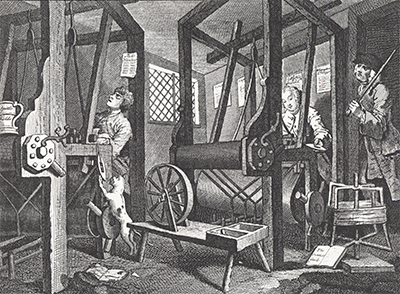
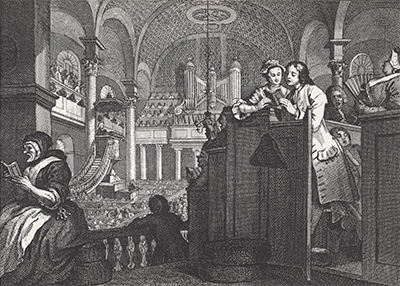
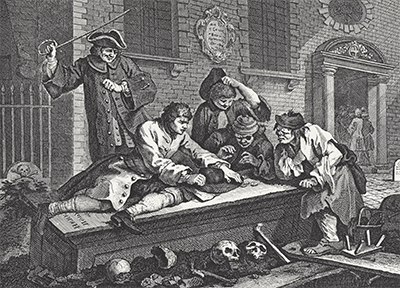
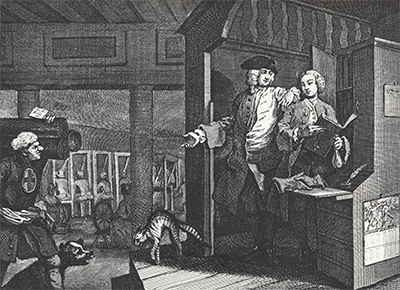
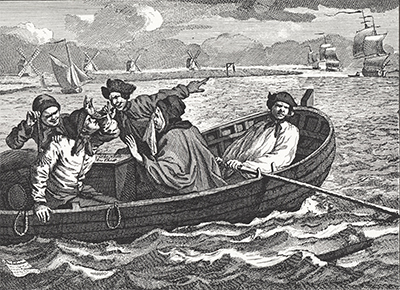
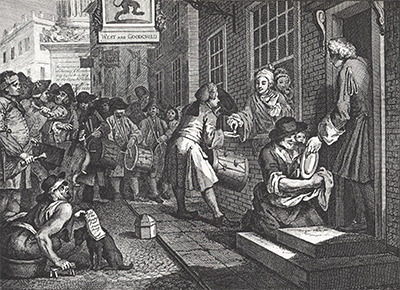
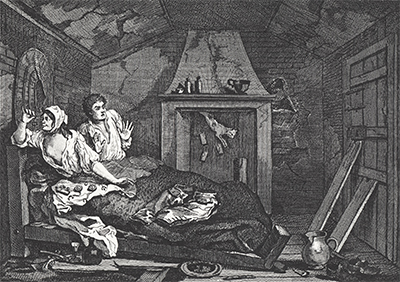
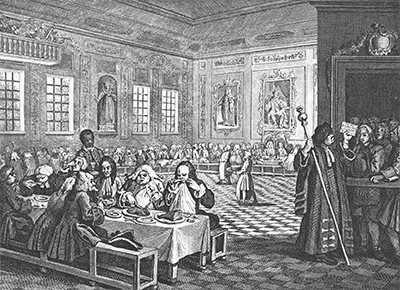
, and taken in a Night-Cellar with his Accomplice William Hogarth.jpg)
